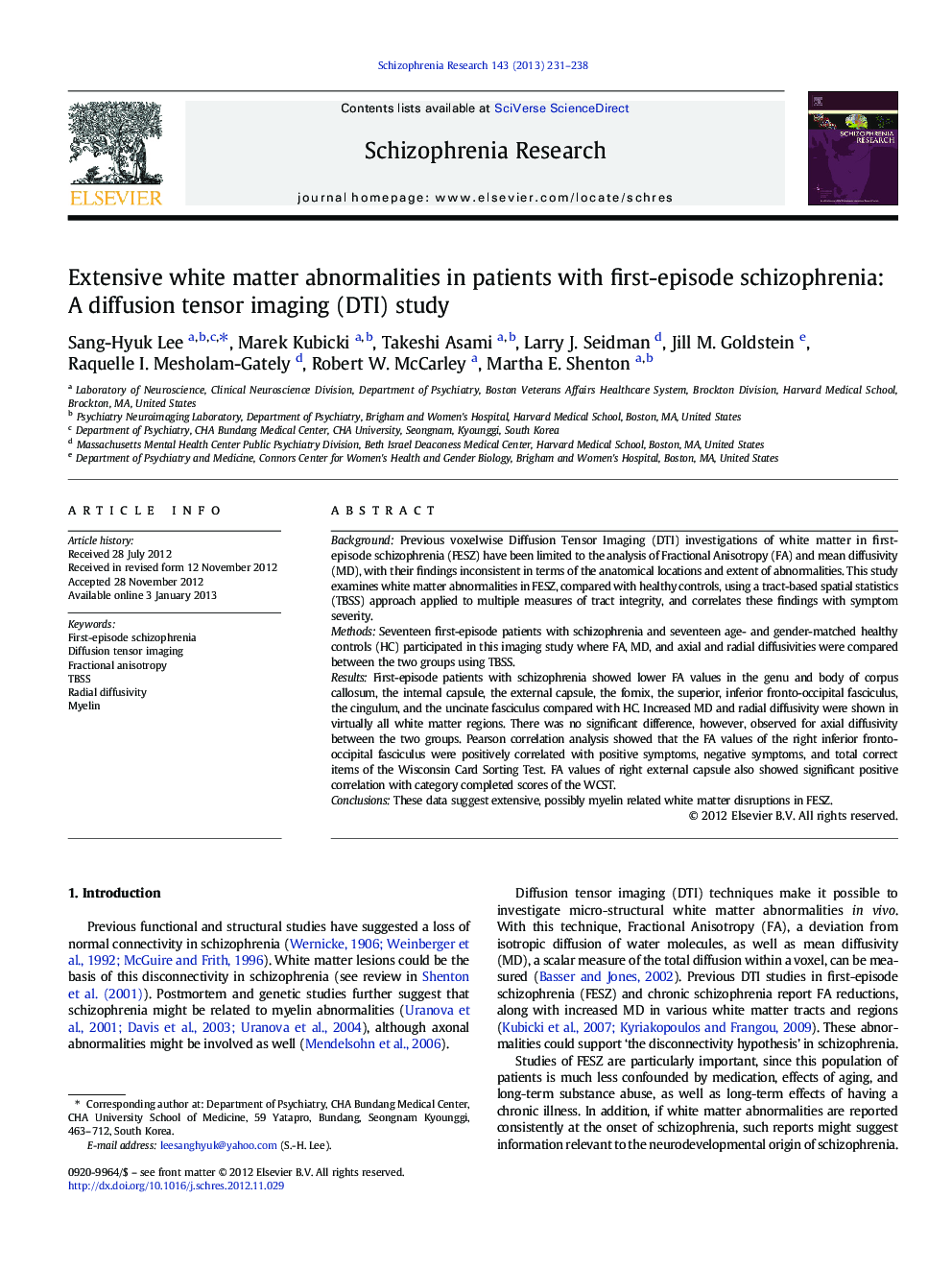| Article ID | Journal | Published Year | Pages | File Type |
|---|---|---|---|---|
| 341365 | Schizophrenia Research | 2013 | 8 Pages |
BackgroundPrevious voxelwise Diffusion Tensor Imaging (DTI) investigations of white matter in first-episode schizophrenia (FESZ) have been limited to the analysis of Fractional Anisotropy (FA) and mean diffusivity (MD), with their findings inconsistent in terms of the anatomical locations and extent of abnormalities. This study examines white matter abnormalities in FESZ, compared with healthy controls, using a tract-based spatial statistics (TBSS) approach applied to multiple measures of tract integrity, and correlates these findings with symptom severity.MethodsSeventeen first-episode patients with schizophrenia and seventeen age- and gender-matched healthy controls (HC) participated in this imaging study where FA, MD, and axial and radial diffusivities were compared between the two groups using TBSS.ResultsFirst-episode patients with schizophrenia showed lower FA values in the genu and body of corpus callosum, the internal capsule, the external capsule, the fornix, the superior, inferior fronto-occipital fasciculus, the cingulum, and the uncinate fasciculus compared with HC. Increased MD and radial diffusivity were shown in virtually all white matter regions. There was no significant difference, however, observed for axial diffusivity between the two groups. Pearson correlation analysis showed that the FA values of the right inferior fronto-occipital fasciculus were positively correlated with positive symptoms, negative symptoms, and total correct items of the Wisconsin Card Sorting Test. FA values of right external capsule also showed significant positive correlation with category completed scores of the WCST.ConclusionsThese data suggest extensive, possibly myelin related white matter disruptions in FESZ.
